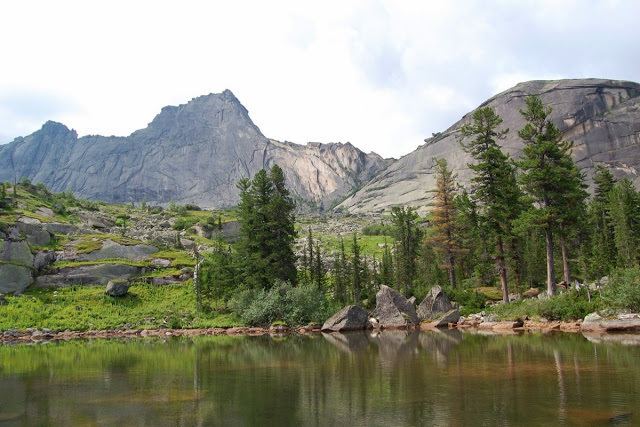 | ||
East siberian taiga for geography
The East Siberian taiga ecoregion, in the Taiga and Boreal forests Biome, is a very large biogeographic region in eastern Russia.
Contents
- East siberian taiga for geography
- Setting
- Flora
- Fauna
- Conservation status threats and protected areas
- References

Setting
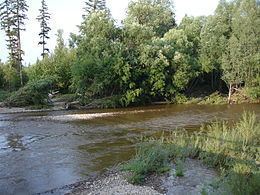
This vast ecoregion is located in the heart of Siberia, stretching over 20° of latitude and 50° of longitude (52° to 72° N, and 80° to 130° E). The climate in the East Siberian taiga is subarctic (tropical deciduous and coniferous) and displays high continentality, with extremes ranging from 40 °C (104 °F) to −62 °C (−80 °F). Winters are long and very cold, but dry, with little snowfall due to the effects of the Siberian anticyclone. Summers are short, but can be quite warm for the northerly location.
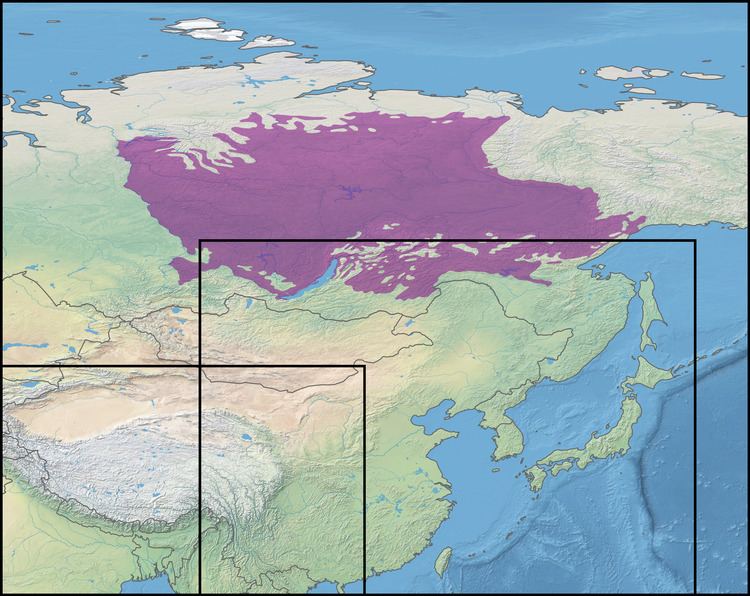
Precipitation is low, ranging from 600 millimetres (24 in) to 200 millimetres (7.9 in), decreasing from east to west. The topography of this ecoregion is varied, consisting of wide, flat plains and areas of karst topography. In contrast to the neighbouring West Siberian taiga, large bogs and wetlands are conspicuously absent. Some trees also shed their leaves annually, a characteristic of deciduous forests.
Flora
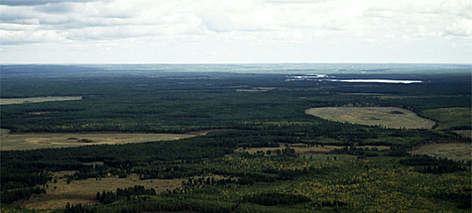
Vegetation consists mainly of vast, dense forests of Dahurian Larch (Larix gmelinii), with Siberian Larch (Larix sibirica) and hybrid between the Dahurian and Siberian Larches (Larix x czekanowskii) occurring as one moves to the west. Cranberry (Vaccinium oxycoccus) and bilberry (Vaccinium myrtillus) bushes dominate the understory.
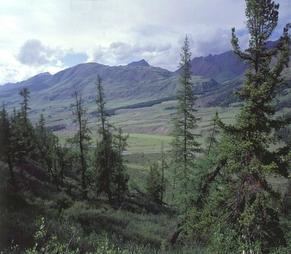
Throughout the ecoregion, smaller areas dominated by Siberian pine (Pinus sibirica), Scots pine (Pinus sylvestris), Siberian spruce (Picea obovata) and Siberian fir (Abies sibirica) can be found. Pine forests and deciduous forests composed of birch and poplar species become more common as one moves south, and at the headwaters of the Lena River and the Nizhnyaya Tunguska River, as well as in the Angara River basin, steppe and shrub-steppe communities can be found along with areas of forest-steppe.
Fauna

This region contains the highest number of brown bears (Ursus arctos collaris), Eurasian wolf (Canis lupus), moose (Alces alces) and wild reindeer (Rangifer tarandus) in Russia. Further south mammals in the East Siberian taiga include Siberian musk deer (Moschus moschiferus), wapiti also known as Asian elk (Cervus canadensis) and wild boar (Sus scrofa). Birds of this ecoregion include the golden eagle (Aquila chrysaetos), peregrine falcon (Falco peregrinus), osprey (Pandion haliaetus), black stork (Ciconia nigra), hooded crane (Grus monacha), carrion crow (Corvus corone), the Siberian blue and rufous-tailed robins (Luscinia cyane and L. sibilans, respectively), the thrush nightingale (Luscinia luscinia), Pallas's rosefinch (Carpodacus roseus), Pacific swift (Apus pacificus) and Baikal teal (Anas formosa).
Conservation status, threats and protected areas
Although little of this ecoregion is protected, its conservation status is listed as "Relatively Stable/Intact". Protected areas in this ecoregion include:
All are "Zapovedniks", (that is, strict ecological reserves). The main threats to this ecoregion's integrity are poaching and clear-cut logging in the southern and central portions of the region.
